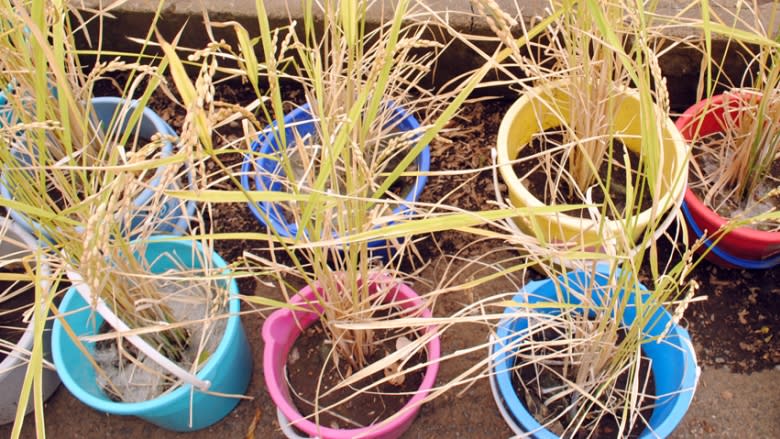What's the secret to Japan's slender population? Serious 'eating education'
Since McDonald's inaugural golden arches were erected in Tokyo more than 40 years ago, fast food franchises have flourished, but Japanese waistlines haven't. It’s a trend government planners say is thanks to mandatory home economics classes.
Today, there are more than 3,000 McDonald's franchises in Japan. The public has also embraced other greasy chains, such as Wendy’s, Burger King and Kentucky Fried Chicken. In fact, it's become an annual tradition for Japanese families to down a bucket of deep fried poultry on Christmas Day.
And while Japan's population is not as skinny as it was before the Big Mac came along, they're not as fat as us. More than 25 per cent of Canadians are obese, according to the latest statistics from the Organization for Economic Co-operation and Development (OECD). About 3.6 per cent of Japanese adults are overweight.
"Obesity rates have been gradually decreasing since 2003 in children and teens," says Takuya Mitani, a health education planner with Japan’s Education Ministry. Mitani says the government was able to stabilize the problem through early recognition and an aggressive approach to food education in Japan’s public school system.
Home economics for all
Twenty-two years ago, home economics became a core course, like science and math. At Azabu High, an all-boys school in central Tokyo, students spend hours in the classroom calculating the protein, fat, carbohydrate and calorie-count of various foods. They also whip up balanced meals in the school’s industrial kitchen.
"When I eat a delicious meal, I feel better. When I eat something that is not good for me, I don’t feel good. I feel worse. And so, food has a great impact on the human body," says 16-year-old Teru Arai.
In most Canadian schools, home economics class is an elective. In Japan, it’s mandatory for boys and girls from Grades 5 to 12. Tadaharu Minamino was the first male home economics teacher in Osaka Prefecture. He says making every student take the class has changed Japanese society, for the better.
"People wouldn’t be as healthy as they are now. And gender equality wouldn’t be as prevalent. The boys also learn to sew and babysit. And because of that, we now have this younger generation of men who are contributing to raising their children," says Minamino.
Grade 9 student Kouya Takahashi is part of an after-school cooking club at Azabu High.
"If I didn't learn how to cook in school, I think I'd be eating instant noodles or frozen food. I don't think I'd be cooking for myself," says Takahashi.
The club is supervised by Mieko Saito, the students' home economics instructor, but was created by the teenagers themselves. When I dropped by, a group of boys age 13 to 17 were making a very labour intensive dessert, made of chestnuts. I was told they chose that ingredient because it was in season.
"We don't just teach them about cooking; we teach them about the importance of eating local," says Saito.
Eating local
In the Tokyo suburb of Suginami, colourful plastic buckets line the schoolyard at Sanya Elementary School. Long shards of green grass shoot out of the pink, blue and canary yellow containers. The students are growing rice. About 20 kilometres north in Kawaguchi, students at Shiba Fuji Elementary have also planted the traditional Japanese crop. But they seeded their grains in a nearby rice paddy, run by a local farmer.
When I visited Shiba Fuji Elementary, Grade 5 students were working up a sweat in their home economics class. They had poured the rice they grew into plastic pop bottles, and were taking turns pounding it with a wooden stick to remove the husks. After that, they rinsed it, cooked it and made rice balls.
Sanya Elementary had already harvested its rice and is using it to supplement their school lunch program. I shared a meal with the Grade 2 class, and witnessed food education before we'd even broken bread. A small girl stood up and began what is a daily ritual at Sanya Elementary. She read the entire lunch menu out loud to her classmates. After the meal, students drew pictures of the ingredients they just ate and stuck them to a map of Japan on the wall. Images of plump purple grapes and pieces of ginger were strategically placed in the region they were grown to illustrate the importance of local produce.
Danielle Nerman travelled to Japan under the 2014 Foreign Press Centre Japan (FPCJ) media fellowship. The program is designed to enable Canadian journalists to broadcast and write articles that will give people outside of Japan an opportunity to learn about the country.



